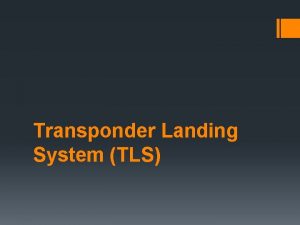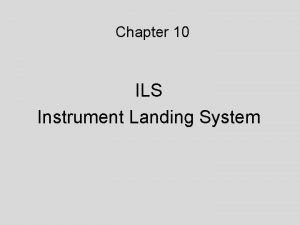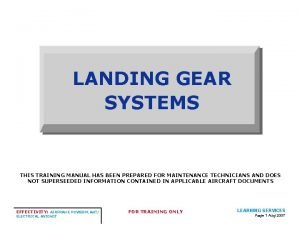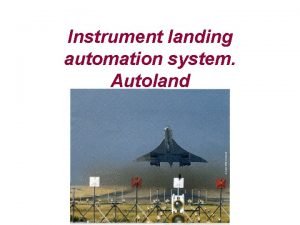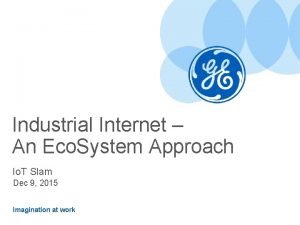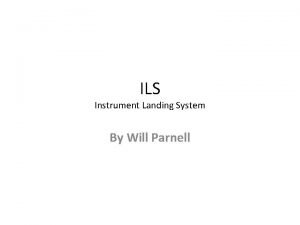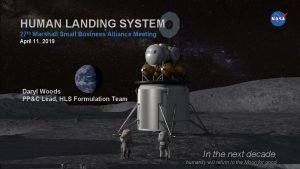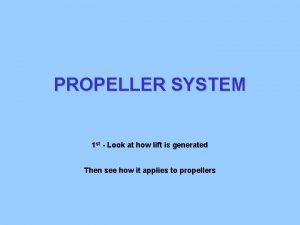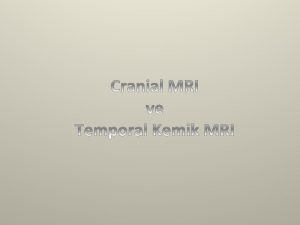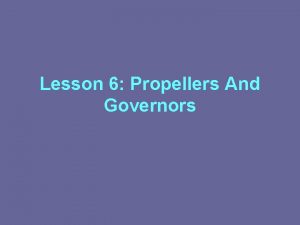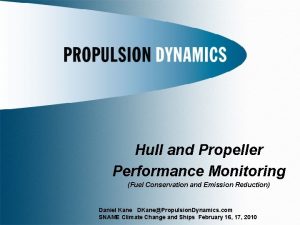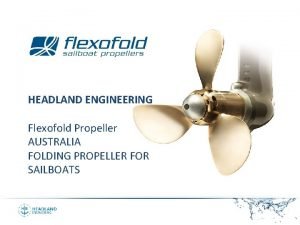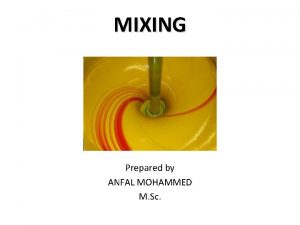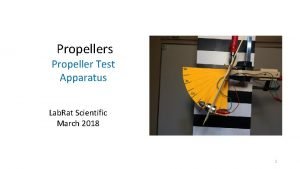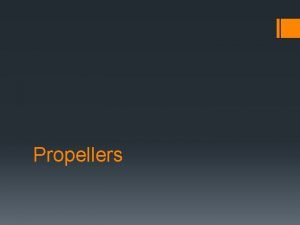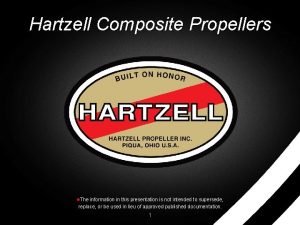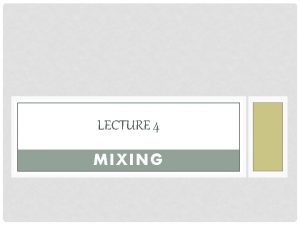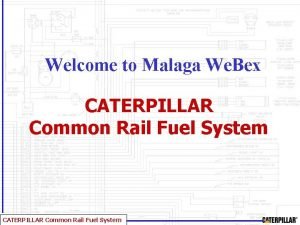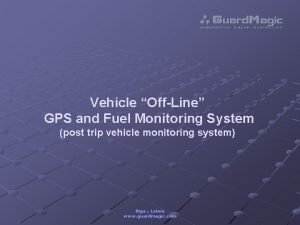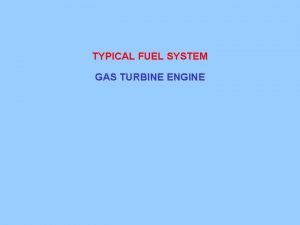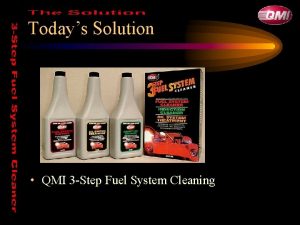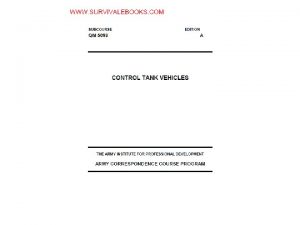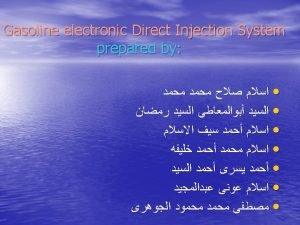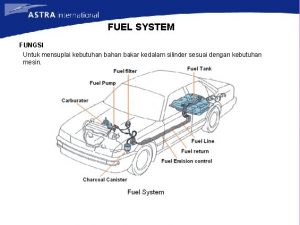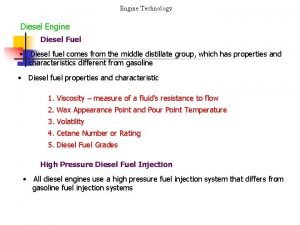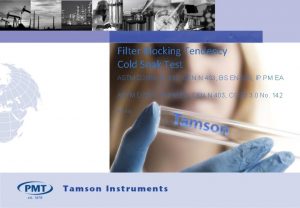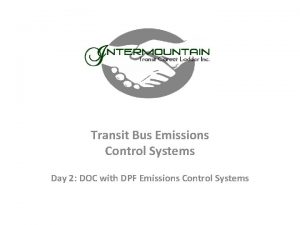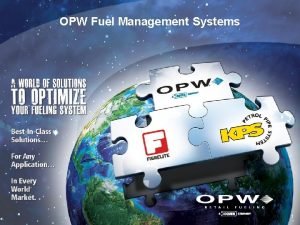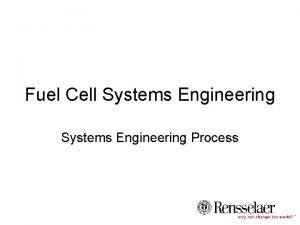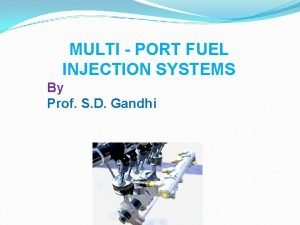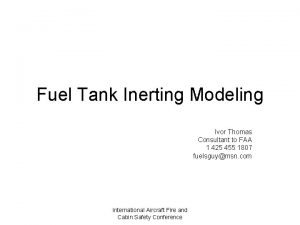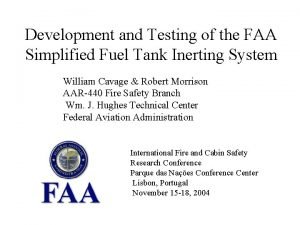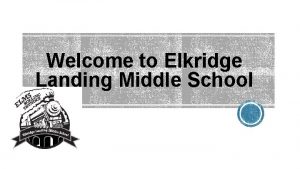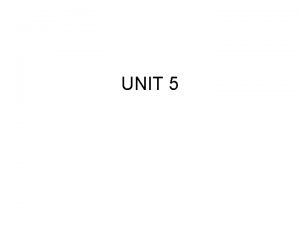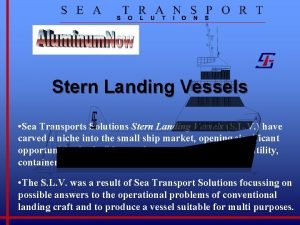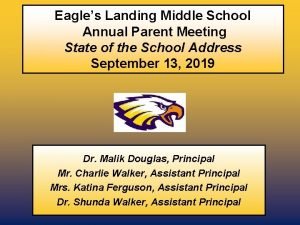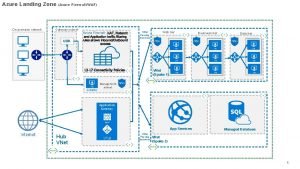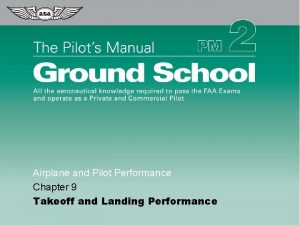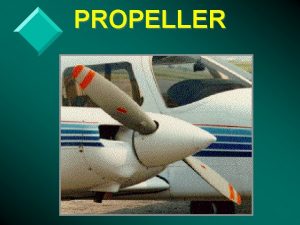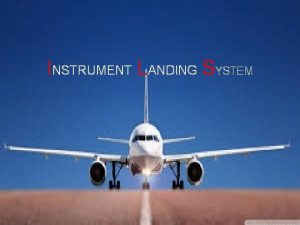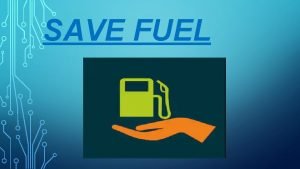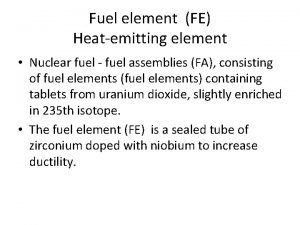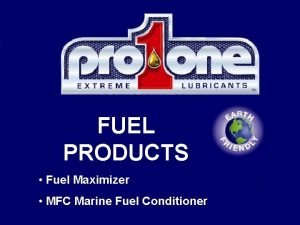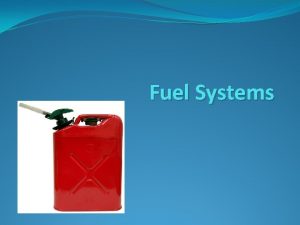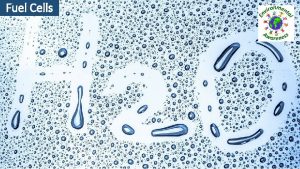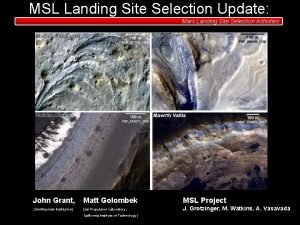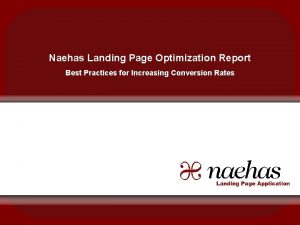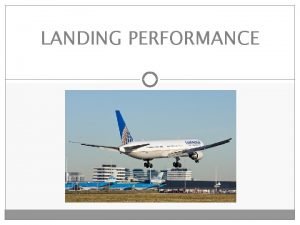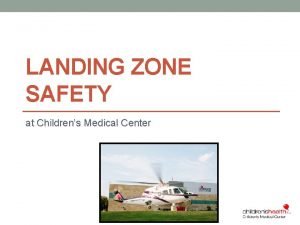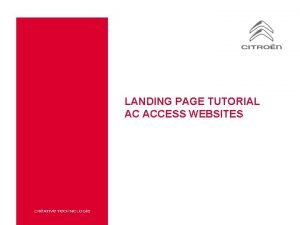Arrow Fuel System Arrow Propeller System Arrow Landing















































- Slides: 47


• Arrow Fuel System • Arrow Propeller System • Arrow Landing Gear • Oxygen Systems and Pressurization • Arrow Preflight

• Two Fuel Tanks – 72 Usable Gallons 75 Total / 50 to Tabs – Vents – Sumps – Gasket • Fuel Selector – Three Position • Fuel Filter – Gascilator Low Point Sump • Engine Driven Fuel Pump • Boost Pump • Fuel Control Unit / Servo Regulator • Flow Divider • Fuel Flow Gauge • Fuel Injectors



• Engine Driven – Driven off of the Accesory Case of the Engine / Diaphragm Type Pump • Electric Boost Pump – Electric Driven Vane Type Pump

• Fuel Control Unit / Servo Regulator Same Component • Fuel Control Unit Point of Mixture Control – Variable Orifice • Servo Regulator Uses Differiential Pressure to Determine a Fuel Value – Fuel Diaphragm – Air Diaphragm – Ball Valve • Servo Regulator also has Internal Throttle Body – Attached to Throttle (Butterfly Valve)



• • Normal Operations Mixture Control Idle Speed Control Differential Pressure and how it controls fuel value

• • • Normal Operations Outlet to Fuel Flow Gauge Outlet to Servo Regulator Outlets to the Injectors Shut Down Operations Vapor Lock – How the Flow Divider Helps Prevent It


• Filter Screen • Principles of CIS • Emulsion Chamber – How this affects the spray pattern


• • Propeller Control Lever Speeder Spring Pilot Valve Fly Weights Governor Pump Propeller Hub – Piston return Spring Spinner


TO OIL SUMP TO PROPELLER

TO OIL SUMP TO PROPELLER

• Electro Hydraulic Fully Reversible • Fluid Used – MIL-H-5606 – Red in color • Normal Operations – Hydraulic – Electrical • Emergency Operations • Caution and Warning Systems






• Why is Vlr Different then Vle? • What is the purpose of the Snubber Orifice? • What is the purpose of the orifice on the nose wheel? • What does the 020 Diameter Bleed Hole Do? • Why do we have to slow to 87 to manually extend the gear? • How would you trouble shoot gear that failed to extend? Retract? • When does the gear horn go off? • Why doesn’t the nose wheel bind when you move the rudders with the gear retracted? • What turns off the hydraulic pump? Extension? Retraction?


• Flight at higher altitudes – favorable winds, better aircraft economy (ram recovery with turbine aircraft) • Regulatory Requirements – 91 and 121 • Emergency Systems – failure of aircraft structure or pressurization systems

• 91. 211 – 12, 500 – 14, 000, 15, 000 • Pressurized Aircraft – Above 25, 000 10 min supply for all passengers • Above FL 350 One crew member must wear or have a system able to supply O 2 while wearing if cabin altitude exceeds 14, 000 feet. , or if both pilots at controls and both have quick don type masks and below FL 410. • If one pilot leaves then the other must put on the mask.

• 121. 333 – 120 min rule – 10 min descent from cruise and 110 min of cruise at 10, 000 • 10 min supply for 10% of the passengers • 15 min supply for cabin attendants wherever they are when the decompression occurs.

• Continuous flow – Usable up to FL 250 or FL 180 with nasal canula. • Dilluter Demand – Good up to FL 350 • Pressure Demand – Up to FL 410 • Theories of operation

• Dalton’s Law – Partial Pressure’s of Oxygen • Law of Gaseous Diffusion and how respiration works • With a low partial pressure of oxygen in the cabin with each breath we take in even breathing 100% oxygen we can rob our bodies of O 2 due to a greater pressure differential • Pressure breathing allows higher partial pressure in the lungs and the O 2 to pass through the alveolar membrane







• High Pressure Bottles – 1800 -1850 PSI • Low Pressure Bottles – 400 -450 PSI • LOX • Chemical Oxygen Generators • Oxygen Generating Systems

• Graham’s Law – As temperature increases the pressure increases • Leaving tanks out in the sun the could quickly become empty • Hoses crack after exposure to extremes of temperature • Use of petroleum based products is not recommended due to extremely flammable nature in pure O 2 Environment.

• S – Supply • C – Connections • R – Regulator • E – Emergency Equipment • A – Adjustments • M - Mask

• Isobaric Control • Differential Pressure Control




• • SL 4000 8000** 10, 000 14, 000 20, 000 30, 000 41, 000 14. 7 psi 12. 7 psi 10. 9 psi 10. 1 psi 8. 6 psi 6. 8 psi 4. 4 psi 2. 5 psi 10. 9 Cabin - 2. 5 Ambient 8. 4 Differential


 Transponder landing system
Transponder landing system Components of instrument landing system
Components of instrument landing system Gear
Gear Drdf aviation
Drdf aviation Instrument landing system localizer
Instrument landing system localizer Aircraft landing gear system
Aircraft landing gear system Marker beacon
Marker beacon Human landing system
Human landing system Propeller club
Propeller club Ground fine pitch
Ground fine pitch Ax t2 propeller mri
Ax t2 propeller mri Pitch propellers
Pitch propellers Hull and propeller performance
Hull and propeller performance Flexofold propeller installation
Flexofold propeller installation Dynamic propeller balancing
Dynamic propeller balancing Turbine mixer disadvantages
Turbine mixer disadvantages P factor aviation
P factor aviation Propeller rat
Propeller rat Horizontal propeller
Horizontal propeller Hartzell composite propeller
Hartzell composite propeller Propeller mixer definition
Propeller mixer definition Caterpillar common rail fuel system
Caterpillar common rail fuel system Vehicle fuel monitoring system
Vehicle fuel monitoring system Gas turbine fuel
Gas turbine fuel Qmi fuel system cleaner
Qmi fuel system cleaner Htars system components
Htars system components L m p f i system uses
L m p f i system uses Jelaskan fungsi fuel system
Jelaskan fungsi fuel system Technology
Technology Aims fuel system
Aims fuel system Filter blocking tendency test
Filter blocking tendency test Cummins isl9 crankcase pressure sensor location
Cummins isl9 crankcase pressure sensor location Opw fuel management system
Opw fuel management system Fuel cell system
Fuel cell system D mpfi is injection system port valve crackcase manifold
D mpfi is injection system port valve crackcase manifold Fuel tank inerting system
Fuel tank inerting system Fuel tank inerting system
Fuel tank inerting system Elms middle school
Elms middle school Zdenka willis
Zdenka willis Wind director indicator
Wind director indicator Tennis game theory
Tennis game theory Soft landing
Soft landing Stern landing vessel
Stern landing vessel Tokens marketo
Tokens marketo Fox landing catalina
Fox landing catalina Eagles landing middle school principal
Eagles landing middle school principal Nva in network
Nva in network Airplane landing distance graph
Airplane landing distance graph
